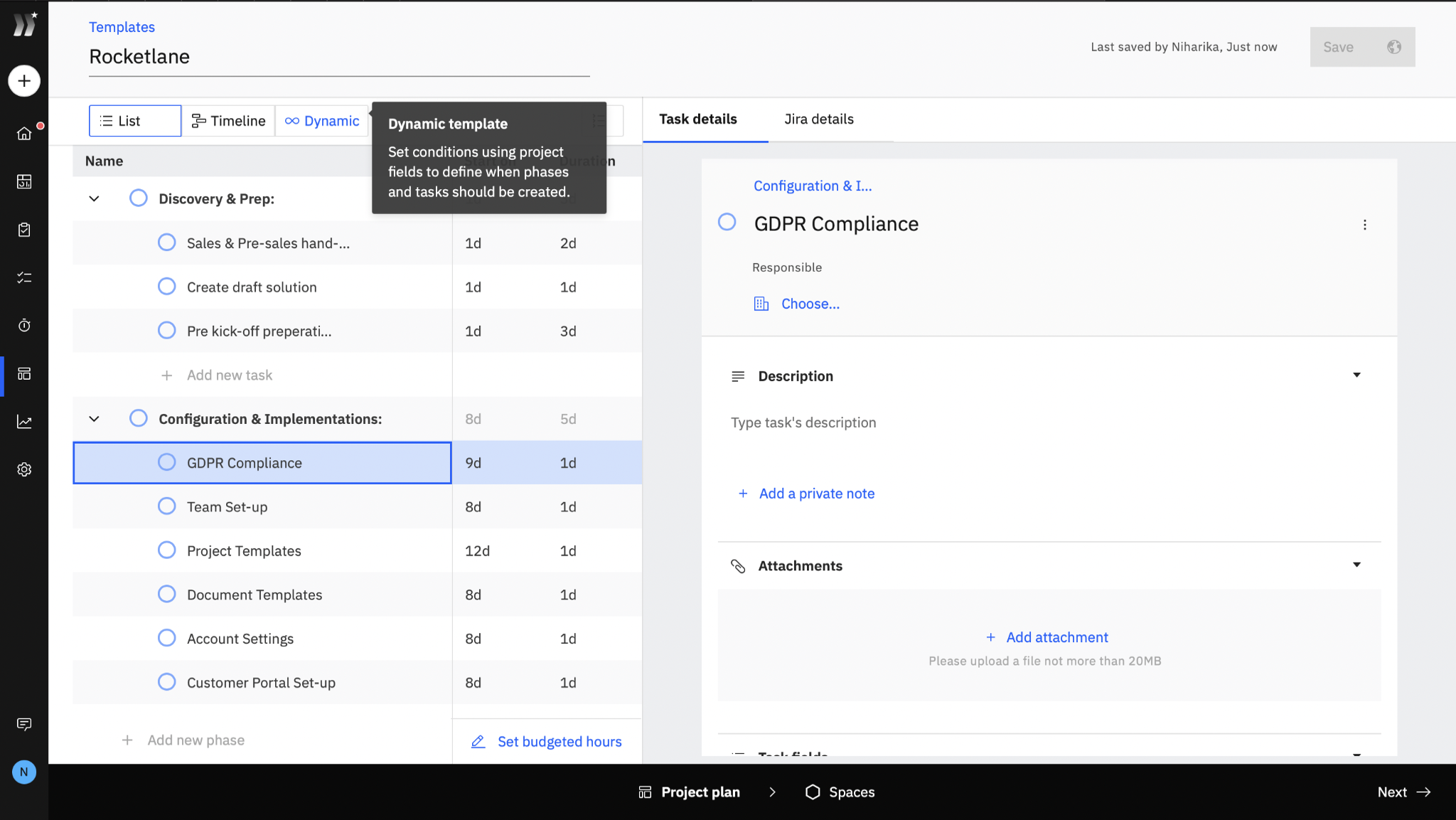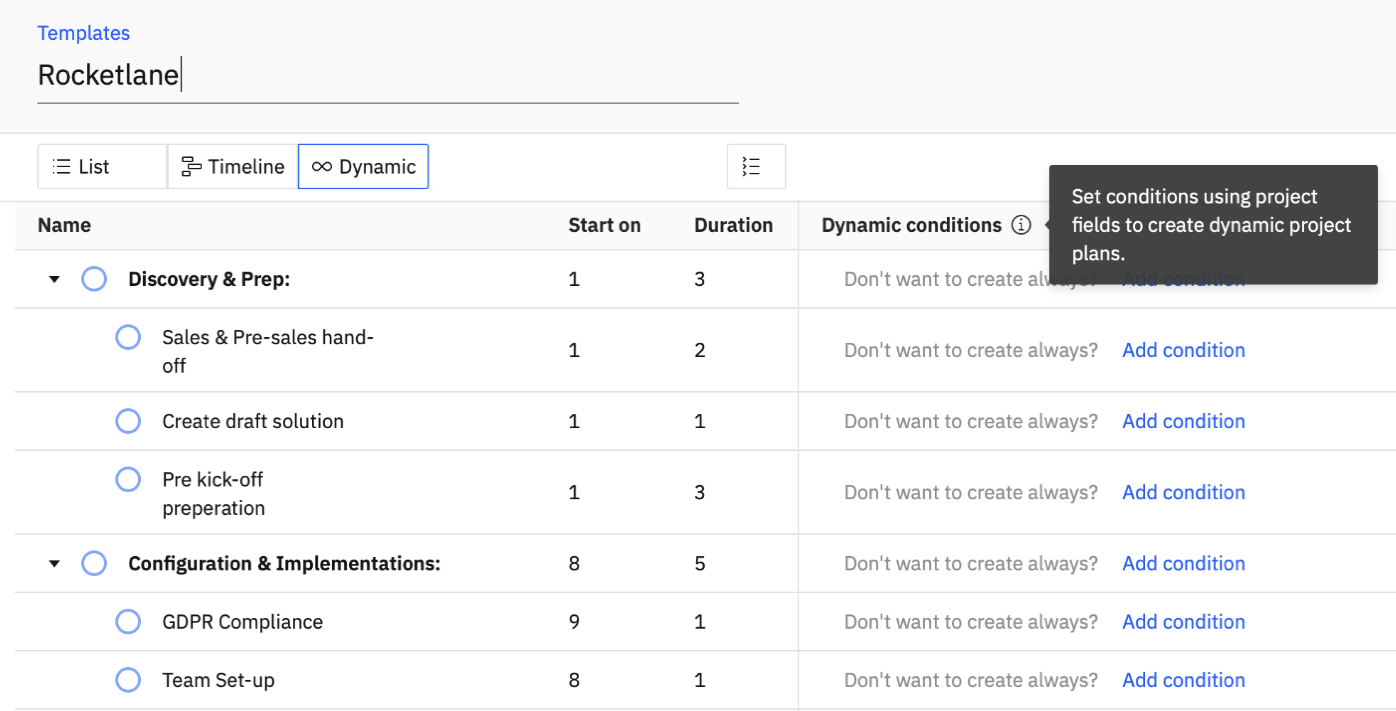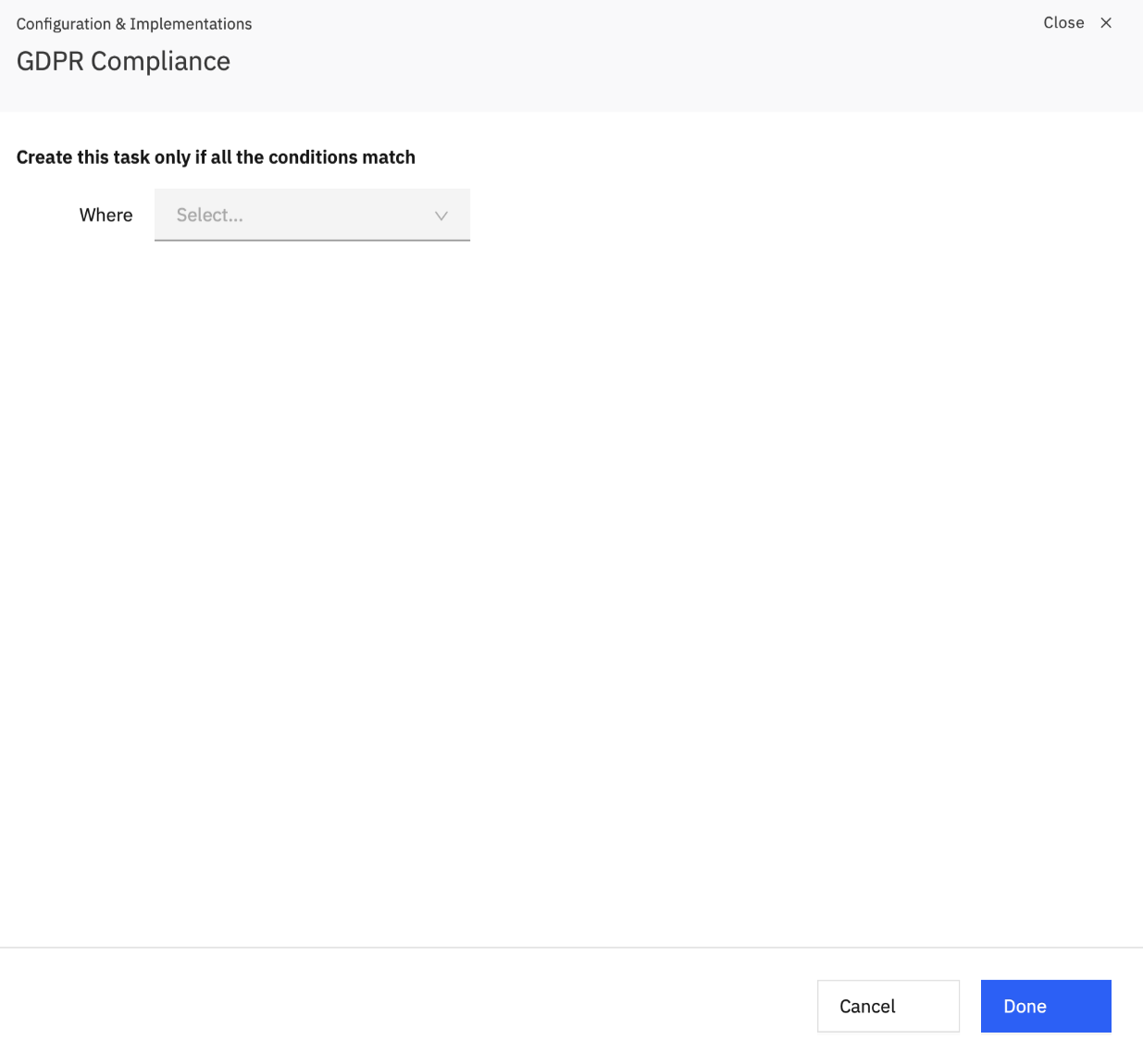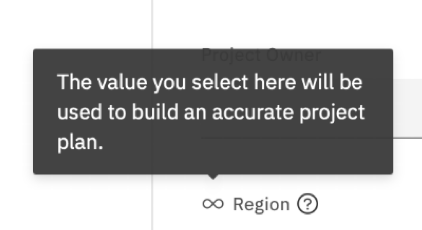A project is a complex and evolving entity which comes with its own set of dependencies and last minute changes.
Planning and executing a project has its ups and downs. In today’s fast paced world, managing projects is no more a rigid task but a fluid one. Hence, having one rigid project plan is not an efficient way to manage projects.
At Rocketlane, we have got you covered with our hassle-free Dynamic Project Templates.
The Dynamic Project Templates let you make changes according to the ever evolving demands and dependencies of your projects. We ensure that the project scheduling is adaptive and gives space to ongoing changes in the plan. By allocating dynamic conditions to a phase/ task/ subtask, it is created only when those conditions are met. This feature lets you micro manage projects in an efficient way.
Let us take a dive into how you can work with our dynamic project templates to amp up your project’s success!
Setting Conditions Using Dynamic Project Templates
- To explore the dynamic project template feature, go to your template and select Dynamic from the available views.

- The Dynamic Project Template page opens.

- Notice that there is a Dynamic Conditions column. Here, you can set dynamic conditions for phases, tasks and subtasks with respect to every project field.

- To set a condition at any step of the project, from the Dynamic Conditions column, click the Add Conditionoption corresponding to that step.

- For instance, let us set the dynamic conditions for a project task. The dialog box for the task opens. This will enable you to set conditions on the creation of the task.

- Select a project field from a dropdown list that can have a dependency on the task creation. This project field will determine the conditions for the creation of the task.

- Alter the values of the selected project fieldaccording to the task creation conditions.

- You can set conditions on multiple project fields for a task. Just click the Add Filter option.
- Click Done to save all the conditions set for the task creation.
- The conditions will be reflected next to the task on the Dynamic Templatespage.

- Click Save on the top right corner of the page, to save all the changes made to your project template.
Pro Tip: In the case of setting dynamic conditions for a phase, as soon as you set a condition, you will be asked to update the dependency of this phase creation on other phase timelines.

With the topic of Dynamic Project Templates being covered, you are fairly acquainted with Project Templates and the process of creating a new one.
Let us now get into how these Dynamic Project Templates are really resourceful and put them to use!
We will now be looking at creating a new project using a Dynamic Project Template and how it is different when using dynamic conditions.
Using a Dynamic Project Template While Creating a New Project
While creating a new project using a dynamic project template, you will notice that the dynamic conditions set for the template used will be reflected in the project too.
During the new project creation process, the Additional Information section allows you to assign additional fields to the project.
In case of dynamic conditions being set to a field in the template, the field will be marked differently in the Additional Information section. This is indicated by an icon before the field name.

For instance, let us use a template with the dynamic conditions for a task called GDPR Compliance as: Region is Exactly EU.

While creating a project using this template, you will notice that the Region field has the ‘dynamic conditions’ icon next to it in the Additional information section.

This means that if the Region field is set to EU, the GDPR Compliance task will be created; otherwise it won't be created.
Hence, setting conditions and pre-defining tasks using a dynamic project template sets you free from the hassle of editing projects plans later!
Hey! Here's hoping that this support document was useful. You can write to us at care@rocketlane.com in case of any queries.
